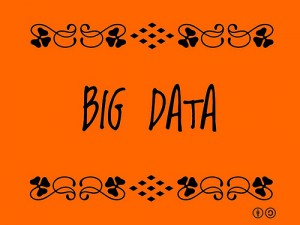 In a recent post I touched upon Big Data as a bona-fide, long-term megatrend in the logistics space. Actually it is megatrend in every industry sector. Michael Lewis popularized the concept of using Big Data to create a competitive advantage in the best-selling book (and subsequent movie) Moneyball.
In a recent post I touched upon Big Data as a bona-fide, long-term megatrend in the logistics space. Actually it is megatrend in every industry sector. Michael Lewis popularized the concept of using Big Data to create a competitive advantage in the best-selling book (and subsequent movie) Moneyball.
We know how Big Data is used in baseball, which by its very nature is full of numbers and statistics to crunch – but what about something so mundane as building management?
P&G and Jones Lang LaSalle provide a great example in their collaborative innovations for sustainability and Smart Buildings, as related in in a recent CoreNet Global article. Their idea was to apply low-cost new technologies, big data and analytics to create a “Smart Building” solution that provides “continual commissioning” in which building equipment is constantly adjusted to maintain peak performance.
They call this system IntelliCommandTM, which is able to thoroughly analyze building systems and to identify and report aberrations. The data analytics provide a powerful, proactive tool that keeps things running at optimum levels and prevents expensive and time consuming equipment breakdowns. Features include data collections; testing development and validations of the analytics and the data; deployment and testing of functionality; and review of continuing operations, event management and alarm reporting.
Larry Bridge, P&G’s Global Facilities and Real Estate (F&RE) Governance Manager, says the results—an 8-13 percent drop in energy use—are impressive: “By converting to a smart building system that uses predictive analytics to detect building performance abnormalities before they occur, we not only achieved energy savings in our corporate real estate portfolio, but we also improved building equipment reliability and the physical comfort of our employees.”
With all the promise of Big Data, you’d think more companies would seek better solutions to unharness their data. Unfortunately, most industries and companies struggle with it. According to the 18th Annual 2014 Third-Party Logistics Study—subtitled the “Current State of the 3PL Market,” researchers found that only 30 percent of shipper respondents and 27 percent of 3PLs say they are planning or currently undergoing Big Data initiatives. And yet, according to the study, overwhelming numbers of shippers (97 percent) and 3PLs (93 percent) “feel strongly that improved data-driven decision making is essential to the future success of their supply chain activities and processes.”
So what is preventing success?
I think a key challenge with Big Data arises because in many cases data is dispersed across many players. Let’s take P&G and JLL as an example, the Smart Buildings initiative was headed by a core group of team members from both companies committed to making a meaningful difference in the area of environmental sustainability and they it a focal point as far back 2007.
Another key Big Data bottleneck is the mindset that companies must work together – in a highly collaborative and transparent manner – if they are to truly harness the potential of turning Big Data into Big Ideas that create business value. There are significant hurdles to overcome for Big Data success, including the sharing of data sets and the “disconnect,” between the various “players” in a firm’s ecosystem. Like it or not, data spans supply chain, information networks, and marketing initiatives that almost always involve suppliers in some key way.
Success with Big Data initiatives will require companies to work with their business partners more strategically.
Bottom line: Big Data is both an opportunity and a tool that requires a more transparent and collaborative approach if you want to leverage its full potential. Having some rocket scientists sit in a room and crunch numbers may provide some good insights – but they also may be one-sided and definitely but won’t help you get traction if your business partners are looking at their own set of “disconnected” data.
Image: Big Data by planeta via Flickr cc